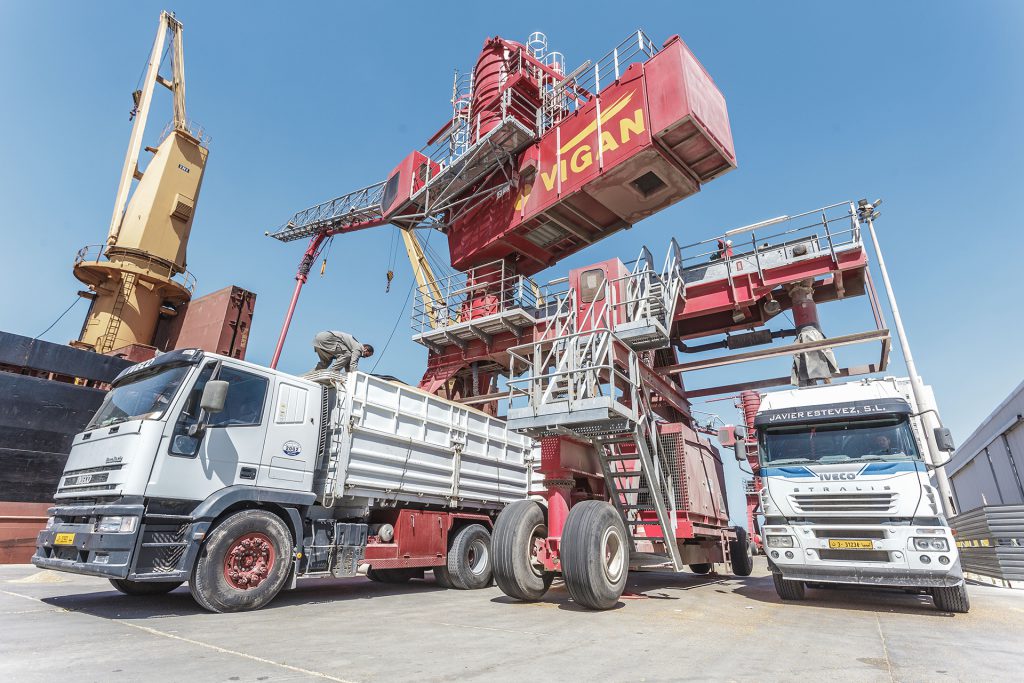Customs duties
They are duties usually applied on the goods imported to the country or exported therefrom. These duties may value duties estimated by a percentage from the value of goods, or they may be a fixed amount imposed on the goods for whatever value, these are called quality duties. Unlike the tariffs, customs duties are used as a basis to collect the state revenues and a tool to protect local producers from foreign competitiveness.
Certificate of origin
It is a certificate issued by the chamber of commerce in the country of export, specifying the place of manufacturing or producing the goods to be exported. The certificate of origin is deemed a necessary document to be acquainted with the nationality of goods in order to estimate the rates of fees to be collected from it or the preference treatments to be granted to them. This certificate is used to control the infiltration of commodities boycotted economically or prohibited.
Export quotas
It is the codifying of the quantities of goods allowed for export. The government makes use of this procedure whether to reinforce the control of prices to avoid their rise, or to control the commodities for defense purposes.


Shipping Terms
An invoice specifying the quantity and value of consigned goods and their specifications, the delivery term linked to price. The invoice is issued from the exporter and legalized by the chamber of commerce.
Commercial invoice
It contains all customs tariffs and other requirements pertaining with import (detailed and for each product) applied by a country on its imports.
Tariff book
An official document prepared by accredited customs clearance agents who carry out the clearance and calculation of customs fees and duties to be collected by the customs authorities. The customs declaration form must be prepared accurately and in conformity with the cargo manifest which is submitted by the carrier to the customs authorities to avoid customs fines.
Customs declaration form, (CDF)
They are public or private warehouses under the supervision of the customs authorities in which goods are stored under the supervision of the customs department prior to undergo clearance procedures. If these goods are taken out from the warehouses, the relevant customs duties must be paid instead of collecting them at the time of their import, however if goods are re-exported there will be no need to pay any fees.
Bonded areas
It is a document describing the products and specifying their value, weight, name of exporter, carrier, port of loading, port of destination, port of arrival, to be submitted to the customs authorities.
Export declaration form
They are goods stored in public warehouses by their owners prior to paying the due fees or taxes in case of their clearance, or part from them if they are re-exported.
Bonded goods
A set of rules stipulated by commercial conventions for the purpose of facilitating the determination of the country of origin. The determination of the country of origin is used to obtain preferential customs exemptions as set out in the free trade conventions.
Rules of origin
It is an invoice prepared by the exporter pursuant to a sale order or inquiry. The receipt of such pro-forma invoice by the importer does not bind him to purchase the products. This document contains a full description of the products, import specifications, expected dates of delivery, payment terms and dates, followed route, packing, shipping, insurance and discharge of goods. This document may be necessary for the importer to obtain the state import license or for opening a letter of credit.
Pro-forma invoice
It is a document issued by the exporter specifying the contents of each parcel and its number, weight of shipment, name of importer, number of commercial invoice, and its describes accurately the products and their specifications.
Packing list
It is a document issued by the exporter specifying the contents of each parcel and its number, weight of shipment, name of importer, number of commercial invoice, and its describes accurately the products and their specifications.
Packing list
It is a license or authorization issued to the importer by a competent state authority allowing him to bring determined quantities of goods and for determined commodities, which may be imported only by means of this license. It is a state instrument to control the traffic of trade across the national borders, and it is a mechanism to ascertain whether the trading policies are executed regarding the granting of preferential treatment and ensuring the fulfillment of requirements prior to the approval as well as the compulsory health and safety requirements.
Import license
It is a state document allowing the exporter to export defined goods to a given country.
Export license
The recovery of fees paid on imported goods upon their re-export.
Drawback
This certificate shows analytic data for the required goods and what are the materials used in their manufacturing, and it certifies that the product is fit for human or animal consumption.
Health certificate
It is a recognized international classification system for the goods traded internationally according to a harmonized commodity code, where products are put in groups according to the nature of materials from which they are manufactured.
Harmonized system
It is a certificate specifying the real weight of goods, and it is required for the harmonized goods based on weight such as rice, sugar and steel.
Certificate of weight
It is a document showing the specifications, sizes and dimensions of goods in terms of length, width, thickness and any other specifications, it shows also the quantity of goods in cubic meter. It is usually used for the goods based on volume and size and not for those based on weight or packing, such as wood and some types of steel.
Specification list
This certificate is needed for the products requiring an analysis to be acquainted with the percentage of their constituents. It must be issued by competent bodies such as laboratories.
Analysis certificate
They are documents given by the customs authorities in the port to the vessel’s master stating that the vessel has fulfilled its obligations and it has the right to leave the port.
Clearance papers
Upon the passage of imported or exported goods at customs inspection or clearance points, the goods must be provided with authorizations to facilitate their passage, and the customs declarations have many forms appropriate with the given customs operation.
Customs declaration
It is an undertaking submitted by importers, proprietors of warehouses, transport companies and persons who import and handle goods subject to customs fees. The purpose of this undertaking is to protect the interests of the government during the time when these goods are retained in the warehouses or during their handling and clearing of their procedures prior to paying the customs duties due on them.
Customs bond
It is a natural or legal person who undertakes the clearing of the official transactions related with the imported goods and their clearance from the customs; preparation of documents for goods destined for export and their submission to the customs authorities, as well as the submission of other documents demanded by the state authorities in foreign countries.
Customs broker
They are the transactions and formalities including the payment of fees, presentation of customs documents required for the clearance of the imported goods after their discharge at the air, sea or land customs inspection point.
Customs clearance
They are fees imposed on imports from a given country at a tax rate higher than the rate imposed on similar imports from other countries.
Discriminating duties
It is the transport of commodities from the forwarding centers to the receipt centers and ports for the purpose of consigning them temporary or carrying out some manufacturing operations on them or their packing then re-exporting them without being subject to the payment of new customs duties.
Transit trade
